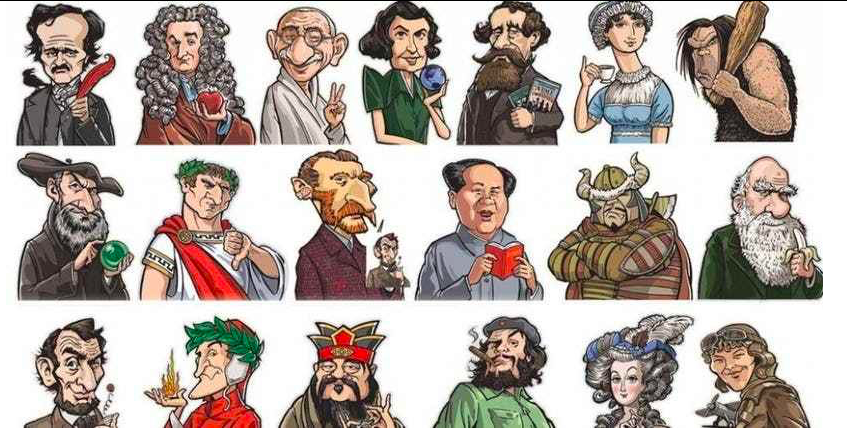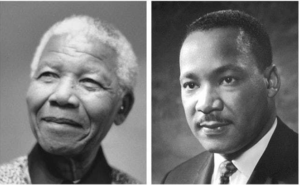Just as the zodiac signs of historical figures gives a glimpse into their lives, understanding the Myers-Briggs personalities of famous people from the past puts them into a new context. What do Rosa Parks and Robert E. Lee have in common? How about Marie Antoinette and Picasso or Dr. Seuss and Fidel Castro?
The famous Myers-Briggs types can tell you whether you’re more likely to get along with Edgar Allan Poe or Queen Elizabeth. And if you don’t know your Myers-Briggs type, make sure to take a free test so you can compare yourself to these historical figures.
ENTJ, “The Commander”
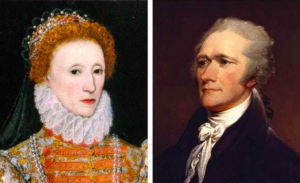
There aren’t many people more commanding than Queen Elizabeth I, who reigned over England during an era where most men feared a woman in power. Elizabeth was an ENTJ – known for producing leaders and strategists. Combining charisma and confidence, it isn’t hard for an ENTJ to convince others to follow. But the efficient, energetic side of ENTJs is balanced by a tendency to be stubborn and impatient.
Historical ENTJs:
- Alexander Hamilton, $10 founding father
- Elizabeth I, Queen of England, daughter of Henry VIII and Anne Boleyn
- Napoleon Bonaparte, French general and emperor
INFP, “The Mediator”
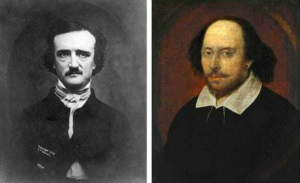
INFPs are defined by their idealism. They are also extremely creative, so it’s no surprise that many famous writers fall into the INFP category, including Shakespeare and Edgar Allan Poe. INFPs have strong principles but they can be wary of direct confrontation, so they express themselves through writing and art. As writers, they can be amazing communicators.
Historical INFPs:
- William Shakespeare, greatest English playwright; invented 1,700 words
- Edgar Allan Poe, troubled author of horror and mystery
- J. R. R. Tolkien, English author obsessed with hobbits
ESTP, “The Entrepreneur”
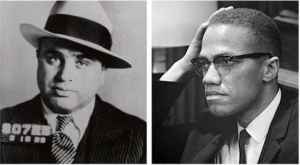
ESTPs love being the center of attention. And that desire for the spotlight can make them restless, always driven to pursue action. Al Capone is a great example: his criminal empire fit with his natural need for action and excitement. ESTPs love drama, and they dive into the action in every situation. Combining boldness with a practical side, ESTPs have to battle their instincts toward impatience and risk.
Historical ESTPs:
- Malcolm X, civil rights activist and black nationalist leader
- Al Capone, gangster and syphilitic
- Winston Churchill, UK prime minister and British imperialist
INTJ, “The Architect”
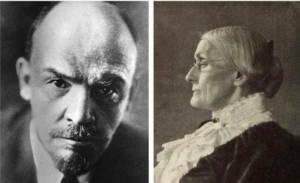
INTJs are known for being extremely strategic – earning them the nickname “the mastermind.” So it’s not surprising that a number of influential historical figures count themselves among the ranks of INTJs, even though they make up only 2% of the population. INTJs are confident, intelligent, and decisive, but they can also tend to be arrogant and judgmental. INTJs can change the world, but they often piss off a lot of people while doing it.
Historical INTJs:
- Augustus Caesar, Roman emperor and nephew of Julius Caesar
- Susan B. Anthony, leader of the women’s voting rights movement
- Vladimir Lenin, Russian revolutionary and founder of the Russian Communist Party
ISFP, “The Adventurer”
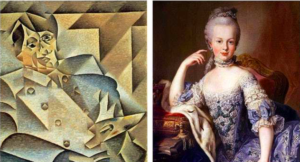
ISFPs are creative and imaginative, and they love being spontaneous. It’s no surprise that artists like Picasso come from this personality type, since ISFPs love to push the limits of aesthetics and design, experimenting with their art. In addition to their artistic side, ISFPs are charming and passionate, but their unpredictability can cause problems. ISFPs also tend to be competitive and they don’t handle criticism well.
Historical ISFPs:
- Marie Antoinette, the last Queen of France who lost her head
- Ulysses S. Grant, general and the 18th US president
- Pablo Picasso, Spanish painter and co-creator of Cubism
ISFJ, “The Defender”
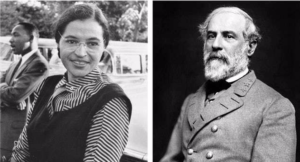
What do Rosa Park and Robert E. Lee have in common? While the two were on opposite sides of the civil rights debate – Rosa Parks famously refused to move to the back of the bus, while Robert E. Lee led an army to keep black Americans enslaved – the two were both ISFJs. They tend to be analytical and yet they have excellent people skills, building connections more than typical introverts. They are caring and helpful, and often devote their lives to helping people in need. Family is important for ISFJs, and they make excellent friends.
Historical ISFJs:
- William H. Taft, only US President to also be a Supreme Court Justice
- Rosa Parks, civil rights activist and launcher of Montgomery Bus Boycott
- Robert E. Lee, Confederate general who surrendered to General Grant
ENTP, “The Debater”
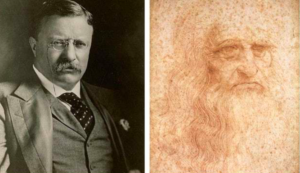
Don’t get into an argument with an ENTP – they’ll never quit. ENTPs love acting as devil’s advocates, and they rarely shy away from conflict. Their natural instincts to question authority and traditions make ENTPs valuable shakers of the system. It’s no wonder that this group includes both Leonardo da Vinci, who questioned the boundaries of art and science, as well as Alexander the Great, founder of a new empire.
Historical ENTPs:
- Theodore Roosevelt, rough rider and US president
- Leonardo da Vinci, Renaissance man and artist
- Alexander the Great, general and founder of an ancient empire
INTP, “The Logician”
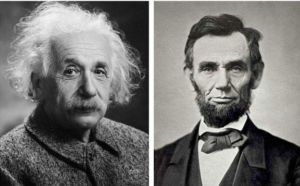
A lot of scientists are INTPs. And it’s no surprise – INTPs love logic, and they always search for reason. On top of that, they love patterns and rooting out inconsistencies. That makes them great analysts and abstract thinkers, and they can also be quite imaginative. After all, it isn’t easy thinking up the theory of relativity. However, they can also seem private and withdrawn, and their brilliance can sometimes come across as condescension.
Historical INTPs:
- Albert Einstein, science genius, Nobel prize winner
- Rene Descartes, philosopher who said “I think; therefore I am”
- Abraham Lincoln, the Great Emancipator and America’s tallest president
ESFP, “The Entertainer”
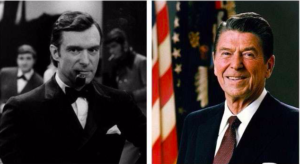
They were on opposite sides of the culture wars, but Ronald Reagan and Hugh Hefner had something in common: both were ESFPs. The personality type is known for producing show-offs and divas, driven by their outgoing, energetic, and impulsive natures. They are stylish, pursue the spotlight, and treat everything like a performance. But that need for constant attention can make ESFPs grow bored easily, and they aren’t great at planning for the future.
Historical ESFPs:
- Ronald Reagan, US president and star of Knute Rockne, All American
- Michelangelo, Renaissance artist and sculptor of “David”
- Hugh Hefner, founder of Playboy magazine and lounge-wear advocate
INFJ, “The Advocate”
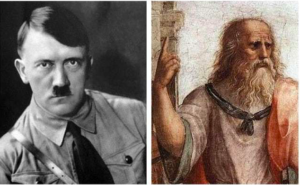
INFJs might be the rarest of the Myers-Briggs personality types, but everyone knows the most famous historical INFJ: Hitler. He combined the INFJ idealism and morality with the will to enact a vision. But not every INFJ is doomed to follow in Hitler’s footsteps. If INFJs can focus on their creativity and insightfulness rather than intensely private perfectionism, they might end up more like Plato or Dante, critics of their society but also men concerned with justice.
Historical INFJs:
- Plato, Greek philosopher; student of Socrates and teacher of Aristotle
- Adolf Hitler, Nazi dictator and failed artist
- Dante Alighieri, politician and poet; author of the Divine Comedy
ENFJ, “The Protagonist”
According to the odds, ENFJs have a two-in-three chance of winning a Nobel Peace Prize – at least going by this list of three ENFJs. Charismatic and full of passion, ENFJs are natural leaders. When ENFJs see something wrong, they speak out. They care deeply about other people and want to help people improve themselves and solve their problems. So it’s no surprise that Martin Luther King, Jr. and Nelson Mandela were both ENFJs.
Historical ENFJs:
- Martin Luther King, Jr., civil rights activist; winner of the Nobel Peace Prize
- Cicero, Roman poet and orator who los
t his hands - Nelson Mandela, South African activist and leader; winner of the Nobel Peace Prize
ENFP, “The Campaigner”
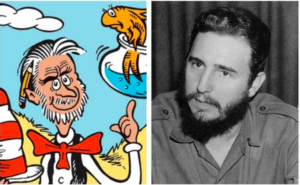 ENFPs are creative and versatile – and their personality traits can take them in many directions. As free spirits, ENFPs want to connect with others, and they often seem very charming and energetic. Some channel their energy into creative writing, like Dr. Seuss, while others are political idealists who have a tendency towards dictatorship, like Fidel Castro. On a practical level, ENFPs have trouble focusing and can easily overthink things.
ENFPs are creative and versatile – and their personality traits can take them in many directions. As free spirits, ENFPs want to connect with others, and they often seem very charming and energetic. Some channel their energy into creative writing, like Dr. Seuss, while others are political idealists who have a tendency towards dictatorship, like Fidel Castro. On a practical level, ENFPs have trouble focusing and can easily overthink things.
Historical ENFPs:
- Charles Dickens, English author who was paid by the word
- Fidel Castro, Cuban revolutionary and communist
- Dr. Seuss, children’s book author and cartoonist
ISTJ, “The Logistician”
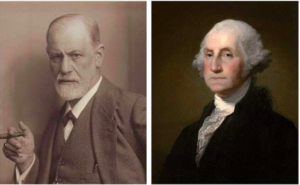
ISTJs are steady and reliable. They are planners who stick to their routines, but they sometimes manage to change the world. With sharp, fact-based minds, ISTJs prefer to be self-sufficient rather than relying on others. They are responsible and enjoy creating order, much like the first US president, George Washington, but they can also tend toward stubbornness and they hate unstructured environments.
Historical ISTJs:
- George Washington, founding father and US president; wooden teeth
- Henry Ford, inventor and businessman who sold millions of Model Ts
- Sigmund Freud, psychoanalyst obsessed with phallic symbols
ESTJ, “The Executive”
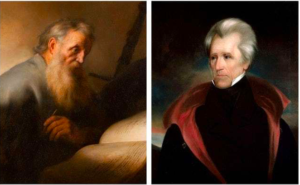
ESTJs are known as executives because they stand for tradition and order. They are driven to bring people together, and they are confident and well-organized leaders. ESTJs can come across as bossy or closed-minded to more free-spirited personality types, but they are very solution-driven and push for their way of doing things. ESTJs often back up their claims by using the mantra of tradition.
Historical ESTJs:
- Andrew Jackson, US President and soon-to-be replaced on the $20 bill
- Paul the Apostle, author of 13 books of the New Testament and apostle of Christianity
- Saddam Hussein, former Iraqi dictator who waged war against Iran and the US
ESFJ, “The Consul”
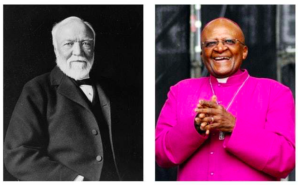
ESFJs are consensus builders, which can make them very popular. At parties, they’re the ones trying to talk with every person and make sure everyone is having a good time, and they often come across as loyal and warm. On the negative side, they can worry about their social status, becoming preoccupied with their influence. Their love for stability and dislike of conflict in the name of consensus helps bring harmony to their groups.
Historical ESFJs:
- Andrew Carnegie, self-made steel tycoon and philanthropist
- William McKinley, US president, acquired Puerto Rico, Guam, and the Philippines
- Desmond Tutu, South African social rights activist; winner of the Nobel Peace Prize
ISTP, “The Virtuoso”
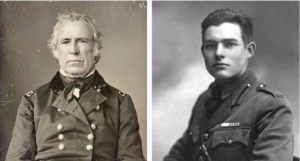
ISTPs love to tinker – they explore the world with their hands, jumping into lots of projects and they’re always building things, so it’s no surprise that Amelia Earhart was an ISTP. They’re practical and energetic, but if they don’t have anything to work on with their hands, they can become bored. Which isn’t good for an ISTP – they sometimes engage in risky behaviors just to have something to do. Along with their practical side, ISTPs are perfectionists who hold themselves to high standards.
Historical ISTPs:
- Ernest Hemingway, writer and Nobel Prize winner
- Amelia Earhart, famous pilot lost at sea
- Zachary Taylor, US President known as “Old Rough and Ready”
